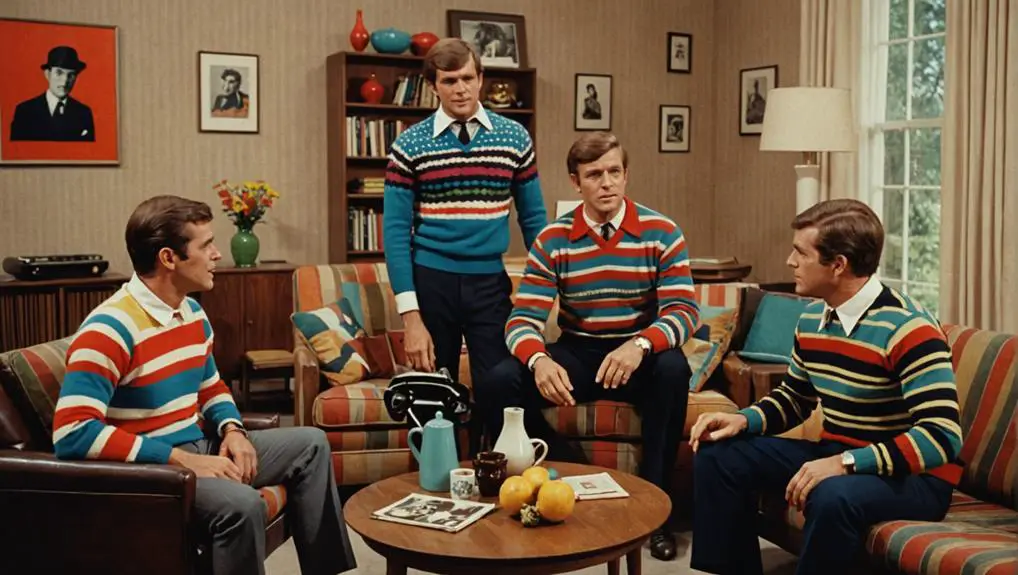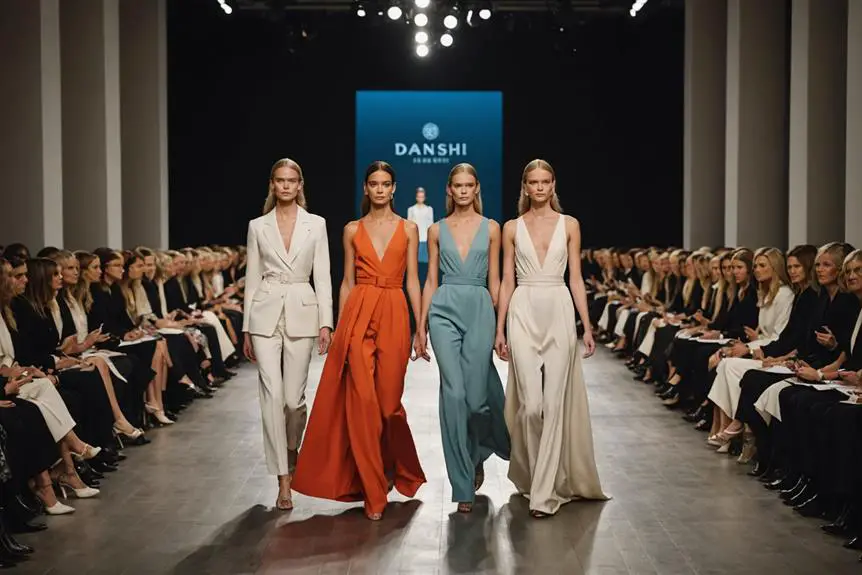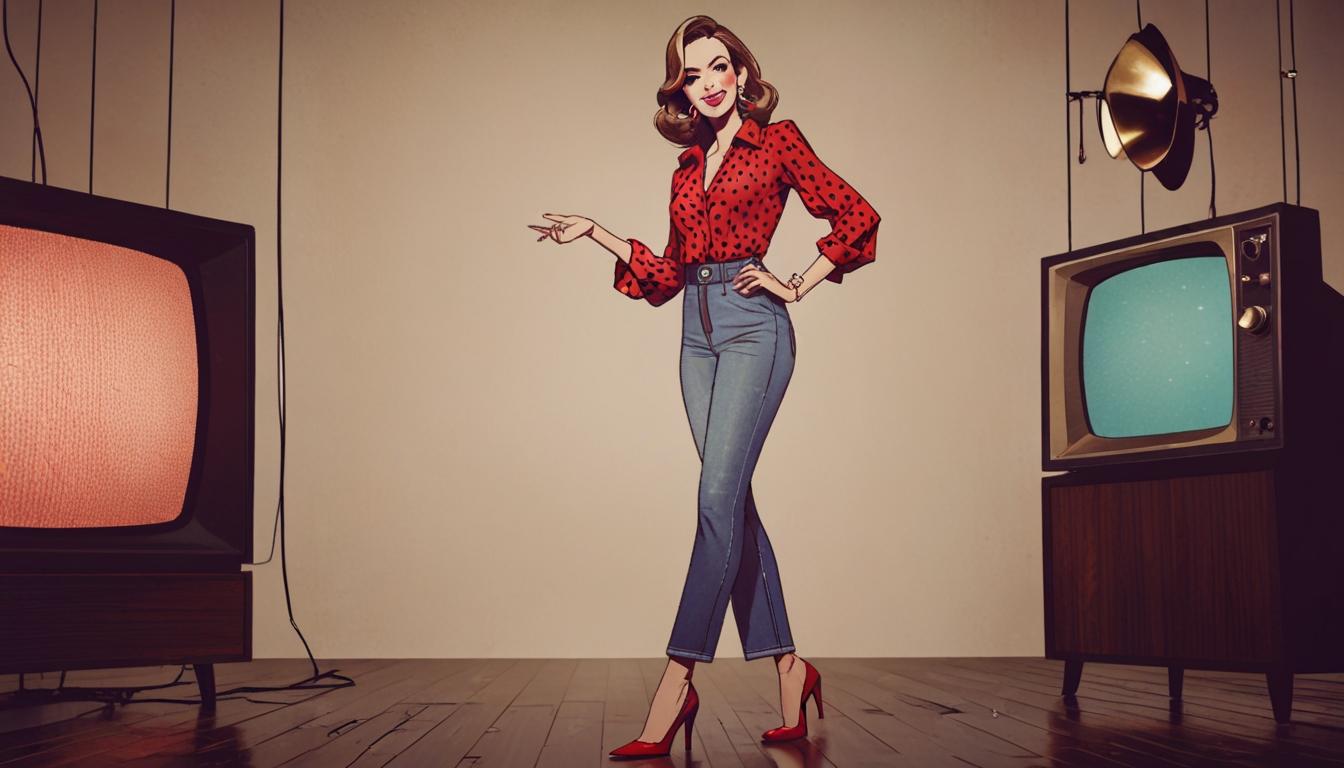Men's jumpers in the 1960s were vibrant expressions of style, blending bold colors and distinctive patterns. You'd see slim-fit designs, often made from wool and mohair blends, featuring elements like large contrasting buttons on cardigans. Chunky knit fisherman sweaters and varsity stripes gained popularity, reflecting the mod aesthetic and youthful energy of the era. As diverse materials became available, textures played a significant role in personal expression. These jumpers not only showcased individual flair but also captured the cultural shifts of the decade. Explore further to uncover how these styles shaped modern fashion narratives.
Overview of 1960s Men's Jumpers
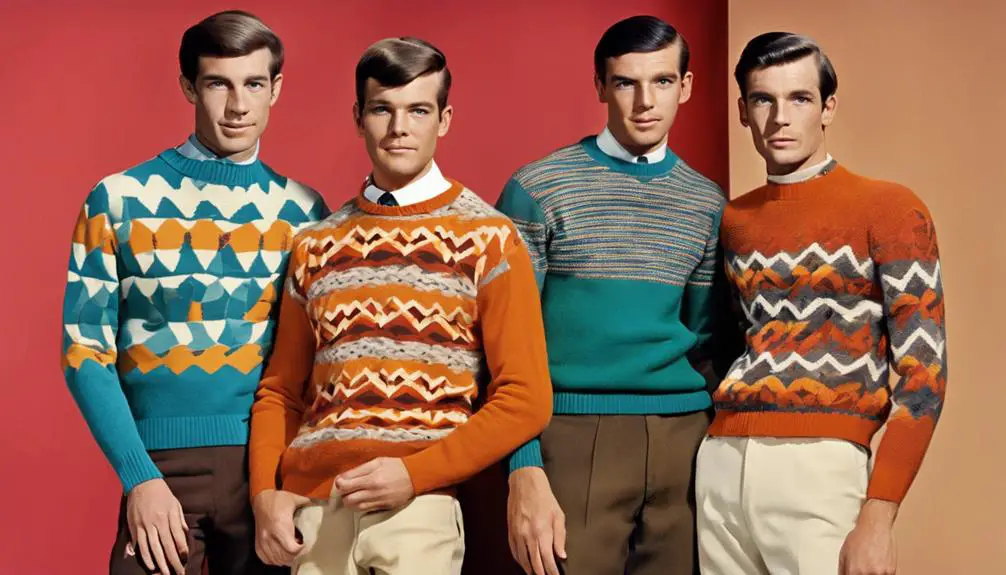
In the vibrant landscape of the 1960s, men's jumpers emerged as a defining element of fashion, reflecting the decade's dynamic cultural shifts. You'd find that these vintage sweaters were characterized by mod styles, featuring slim fits, bold colors, and distinctive patterns. Colorblock and geometric designs became staples, offering a fresh take on knitwear.
Among the popular options were button-up cardigans and pullovers, often crafted from luxurious materials like wool and mohair blends. These fabrics not only provided warmth but also added texture, enhancing the overall aesthetic. Chunky knit fisherman sweaters and varsity stripe designs gained traction, epitomizing the era's trend toward casual yet stylish apparel.
Iconic fashion elements, such as large contrasting buttons on cardigans, contributed to the unique touch of these pieces, making them stand out in any wardrobe. The revival of retro styles during this decade solidified knitwear's status as a staple in men's fashion, appealing to both collectors and the fashion-forward. This love for vintage jumpers showcased a blend of nostalgia and modernity, perfectly capturing the essence of 1960s style.
Popular Materials and Textures
Men's jumpers of the 1960s were not just about style; they were also a proof to the diverse materials and textures that defined the era. Wool remained a cornerstone, with variations like Shetland and mohair blends providing warmth and a unique tactile experience. Vintage clothing labels often played a vital role in identifying these garments, as mohair sweaters, known for their fuzzy textures and vibrant colors, resonated with the youth culture's grunge aesthetic, making them a popular choice among trendsetters.
The introduction of acrylic fibers, particularly Creslan, revolutionized men's fashion by offering lightweight alternatives that allowed for bold color patterns and innovative designs. Chunky knit sweaters emerged as a staple, characterized by thick yarn and textured patterns that conveyed a relaxed, casual style, fitting seamlessly into the decade's ethos.
Vintage sweaters from this period often showcased distinctive designs, including colorblock patterns and argyle motifs, enhancing their visual appeal and enabling personal expression. As you explore these materials and textures, you'll see how they not only shaped the clothing but also reflected the broader cultural shifts of the 1960s, making men's jumpers a significant aspect of the decade's fashion narrative.
Iconic Styles and Designs
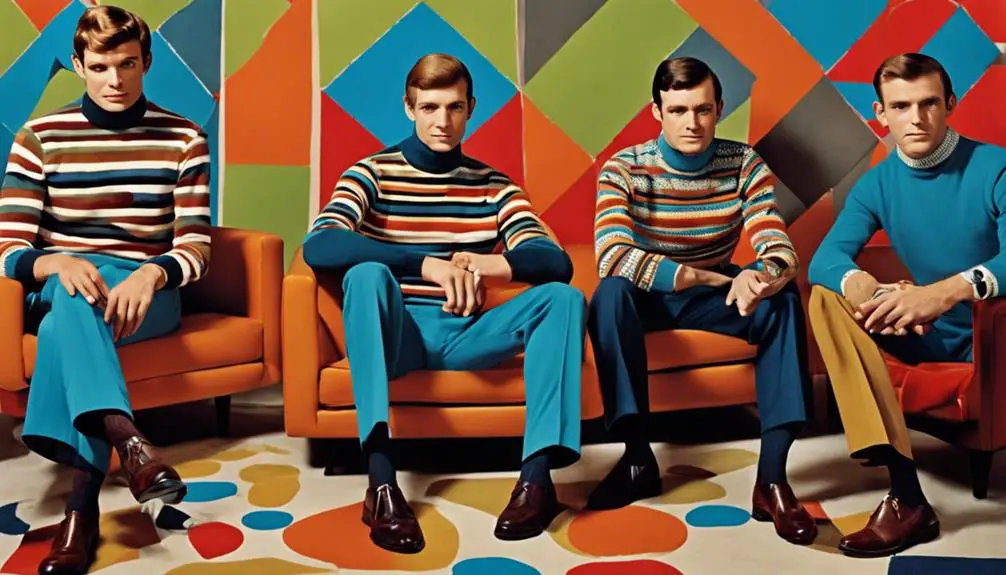
The 1960s revolutionized men's jumpers with styles that boldly expressed individuality and embraced the vibrant spirit of the decade. You'd notice the rise of slim-fit sweaters, featuring narrow cuffs and collars, often made from luxurious materials like wool and mohair. As the mod fashion movement took hold, bold colors and patterns became a hallmark, transforming traditional silhouettes into statement pieces.
Iconic designs included the multicolor Cardigan Sweater, complete with large contrasting buttons that added flair. The Knit Cardigan KURT COBAIN also emerged, reflecting the rock influence of the era. Additionally, the Varsity Letterman Cardigan and Letterman Sweater captured the youthful collegiate vibe, often adorned with stripes or the classic Argyle pattern. Chunky knit fisherman sweaters became staples, providing both warmth and textural interest, frequently showcasing unique patterns that made them stand out.
| Style/Design | Characteristics |
|---|---|
| Cardigan Sweater Multicolor | Bold colors, large buttons |
| Varsity Letterman Cardigan | Collegiate stripes, youthful appeal |
| Mohair Wool Knit Sweater | Soft texture, unique patterns |
| Chunky Knit Fisherman Sweater | Warmth, distinctive textures |
Key Fashion Trends of the Decade
As the 1960s unfolded, fashion became a powerful medium for self-expression, with men's jumpers at the forefront of this cultural shift. The decade saw a remarkable evolution in mens sweaters, characterized by slim-fit designs featuring narrow cuffs and collars that echoed the mod aesthetic. You'd find bold colors and patterns dominating the scene, with colorblocking and geometric designs appealing to the fashion-forward youth.
Cardigans gained immense popularity, often showcased with large contrasting buttons, making them an essential part of smart-casual outfits. The Wool Knit Sweater Cardigan became a staple, bridging comfort and style seamlessly. Meanwhile, chunky knit fisherman sweaters and varsity cardigans re-emerged, blending warmth with a sporty edge. These styles weren't just about looks; they represented a shift towards practicality and casual elegance.
The introduction of diverse materials, particularly mohair blends, offered both texture and durability, enhancing the appeal of men's jumpers. In this vibrant decade, the knit sweater vest also found its place, further emphasizing individuality and flair. Overall, the 1960s redefined men's knitwear, making it a crucial expression of identity and style.
Notable Brands and Labels
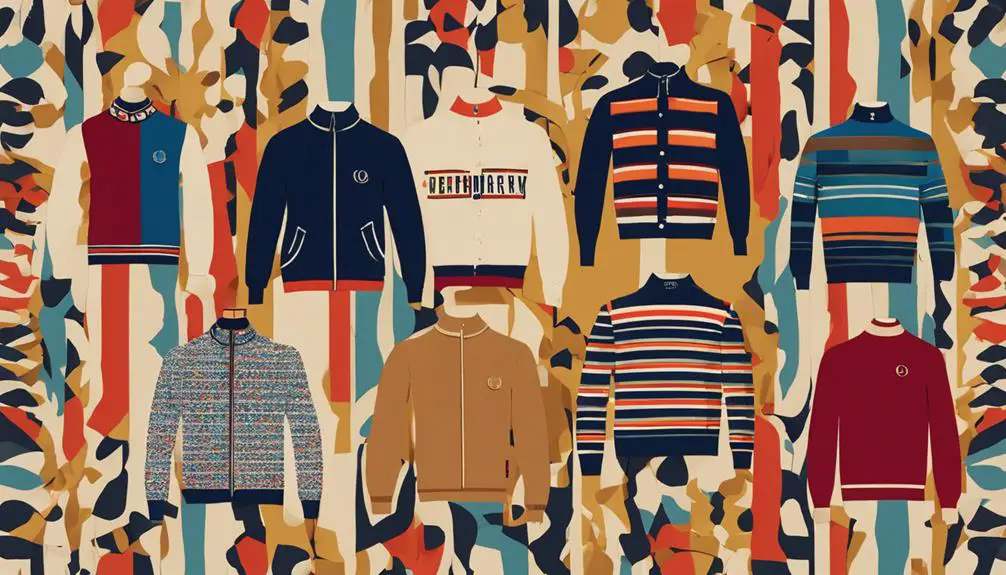
Emerging from the vibrant fashion landscape of the 1960s, several notable brands left a lasting impact on the knitwear scene, shaping men's jumpers into stylish essentials. McGregor, renowned for its classic knit styles, brought varsity sweaters into the mainstream, allowing you to embrace an athletic yet casual aesthetic. Jantzen complemented this trend by offering an array of wool and patterned cardigans, perfect for layering and showcasing personality.
Campus stood out with its collegiate-style sweaters, characterized by bold colors and decorative patterns that appealed to the youthful spirit of the era. Their Expressions line further pushed boundaries with distinctive designs that fused functionality with trendy motifs. Meanwhile, Mary Maxim captured attention with chunky knit styles inspired by traditional Cowichan designs, providing warmth and a rugged charm.
Brands like Holovak & Coughlan also made their mark, focusing on collegiate and athletic-inspired fashions that emphasized comfort and style in 1960s men's jumpers. Collectively, these labels not only reflected the decade's dynamic fashion trends but also contributed to a lasting legacy in knitwear that resonates even today.
The Influence of Subcultures
Throughout the 1960s, subcultures like the Mods and Rockers stirred up a revolution in men's fashion, particularly in the domain of jumpers. The Mods embraced tailored styles and vibrant colors, favoring pieces like the knit cardigan sweater, often in striking hues. In contrast, Rockers opted for rugged designs, reflecting their rebellious spirit through oversized pullovers and cable knit patterns.
The emergence of materials like green mohair wool knit and wool blends catered to a youth culture craving unique textures. This demand led to an explosion of eclectic designs, resonating with individual identities. Iconic figures, such as The Beatles, donned these jumpers, making them symbols of the era's zeitgeist and influencing trends in men's knitwear.
As the decade wore on, the rise of the "grunge" aesthetic favored oversized, chunky knit sweaters, often featuring bold patterns that mirrored an anti-establishment attitude. Vintage sweaters from this era, particularly those with Rockabilly atomic designs, have become highly sought after by collectors, emphasizing how these subcultural movements left a lasting impact on men's jumpers. Each sweater size reflected not just a fit but a statement of personal style and cultural affiliation.
Care and Maintenance Tips
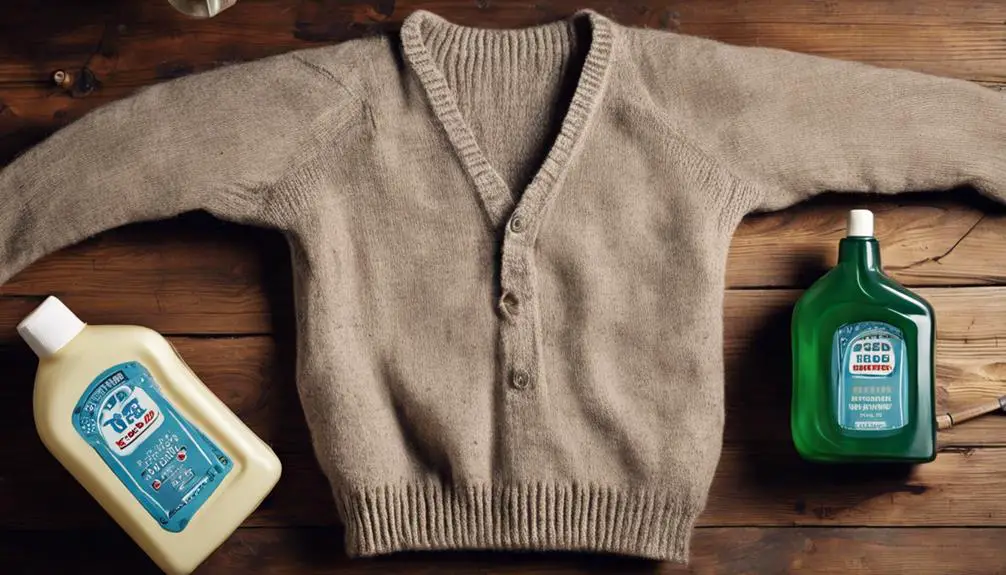
Proper care and maintenance of vintage jumpers is essential to preserving their charm and longevity. If you own a vintage wool sweater, especially in classic blue hues, you'll want to treat it with special attention. Identification service for vintage tags can help you understand the history of your garment. Hand washing is your best bet; it prevents shrinkage and keeps the knit in prime condition. Use mild detergents specifically made for wool to avoid any harsh chemicals that could damage those delicate fibers.
When it comes to drying, air drying is the way to go. Lay your sweater flat to maintain its shape and texture, steering clear of the machine dryer. Proper storage is equally important. Keep your vintage mens knitwear in a cool, dry place, ideally inside breathable cotton bags, to ward off moths and other pests.
Regular inspections for wear and tear are vital. Prompt repairs can greatly prolong the life of your vintage sweaters, allowing you to enjoy their unique character for years to come. By following these care and maintenance tips, you not only protect your investment but also celebrate the timeless appeal of 1960s mens fashion.
Vintage Market Trends
As you care for your vintage jumpers, it's worth noting the rising trends in the vintage market, particularly for 1960s styles. The appeal of these pieces lies in their unique designs and quality fabrics, such as wool and mohair. Online platforms have revolutionized access to vintage menswear, allowing you to investigate an impressive range of offerings, from the classic Knit Letterman Cardigan Sweater to the sought-after Green Mohair/Wool Knit Cardigan.
Pricing in this market is diverse; while you might find basic wool cardigans starting at $29.94, rare mohair pieces can fetch over $650. As you explore this world, you'll notice that 1960s men's jumpers are not just fashion statements; they reflect a nostalgic era filled with bold colors and patterns. Iconic items like the Cardigan KURT COBAIN exemplify the distinct styles that collectors crave.
Moreover, these vintage pieces often hold their value over time, making them a smart investment for enthusiasts and collectors alike. Whether you're searching for a size large or a specific design, the vintage market is thriving, and there's never been a better time to embrace it.
Styling Tips for Modern Wear
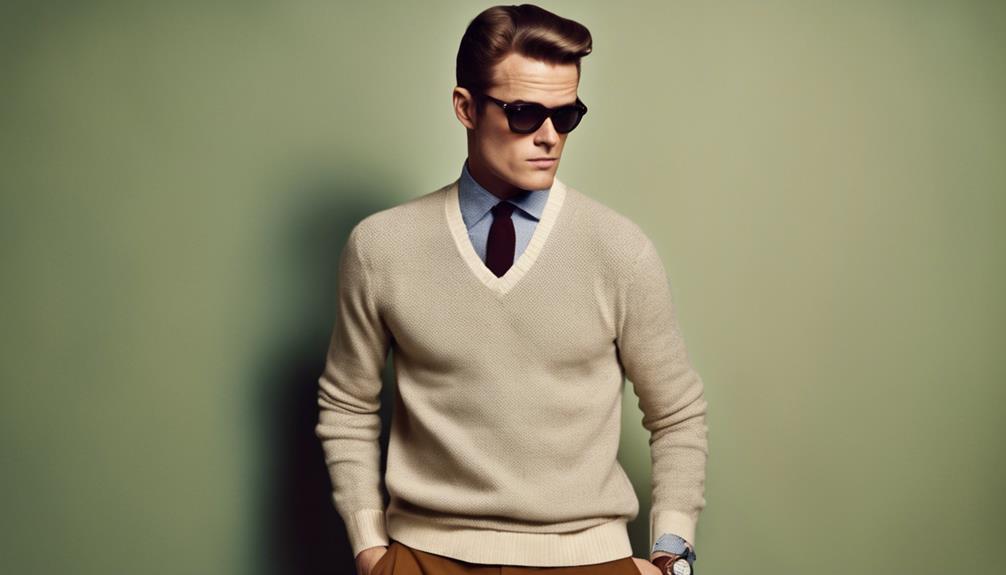
Embracing 1960s men's jumpers in your modern wardrobe can elevate your style while paying homage to a vibrant era. To achieve a contemporary look, consider pairing a slim-fit Lodge Pullover Sweater Mens with high-waisted trousers. This combination creates a balanced silhouette that echoes the mod fashion of the time. Opt for bold colors and geometric patterns reminiscent of the 60s—these elements add a vintage flair to your ensemble.
For a standout piece, look for a Cardigan KURT COBAIN featuring large contrasting buttons, which evoke the distinctive charm of 1960s knitwear. Layer a Mohair/Wool Knit Cardigan KURT over a fitted shirt for a classic, warm outfit ideal for casual outings. Don't overlook the Zip Up Sweater; it's a versatile choice that can easily shift from day to night.
Frequently Asked Questions
What Type of Clothing Was Popular in the 1960S for Men?
In the 1960s, you'd notice men favoring slim-fit garments, vibrant colors, and bold patterns. Styles like cardigans and pullovers emerged, reflecting a youthful spirit while blending casual and collegiate aesthetics for a distinct look.
What Were Popular Accessories for Men in the 1960s?
In the 1960s, you'd see men sporting wide-brimmed fedoras, slim ties, and leather gloves. Aviators and statement watches added flair, reflecting a bold, fashionable approach that defined the decade's iconic accessory style.
Were Sweaters Popular in the 60s?
Yes, sweaters were incredibly popular in the 60s. You'd see bold colors and unique patterns everywhere, reflecting a shift towards casual wear. Their versatility made them essential for both daily outfits and more formal occasions.
What Type of Shoes Did Men Wear in the 1960s?
In the 1960s, you'd notice men favoring loafers for comfort, Chelsea boots for style, and vibrant sneakers that echoed youth culture. Brogues and oxfords remained classic choices, showcasing intricate designs that complemented various outfits.
